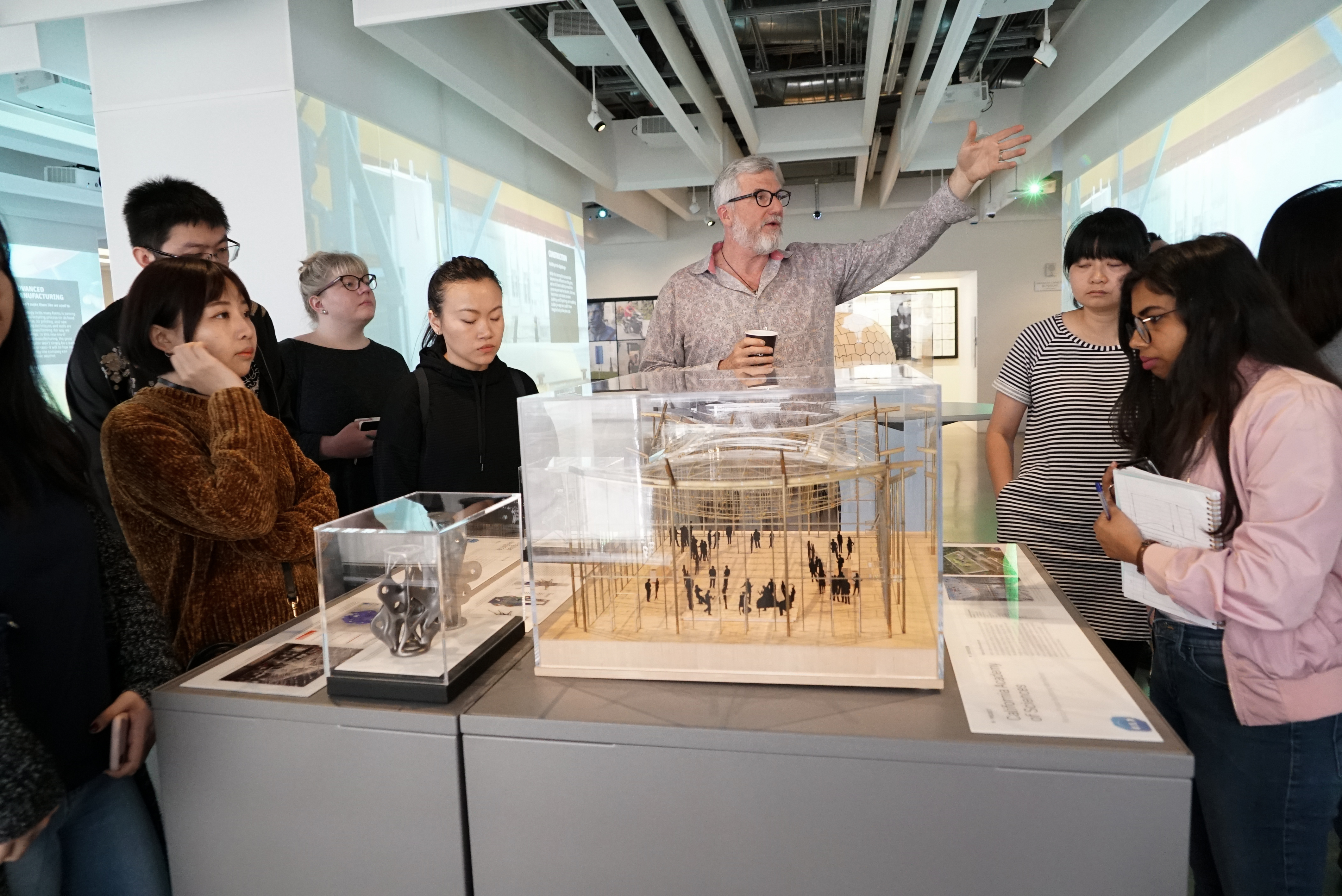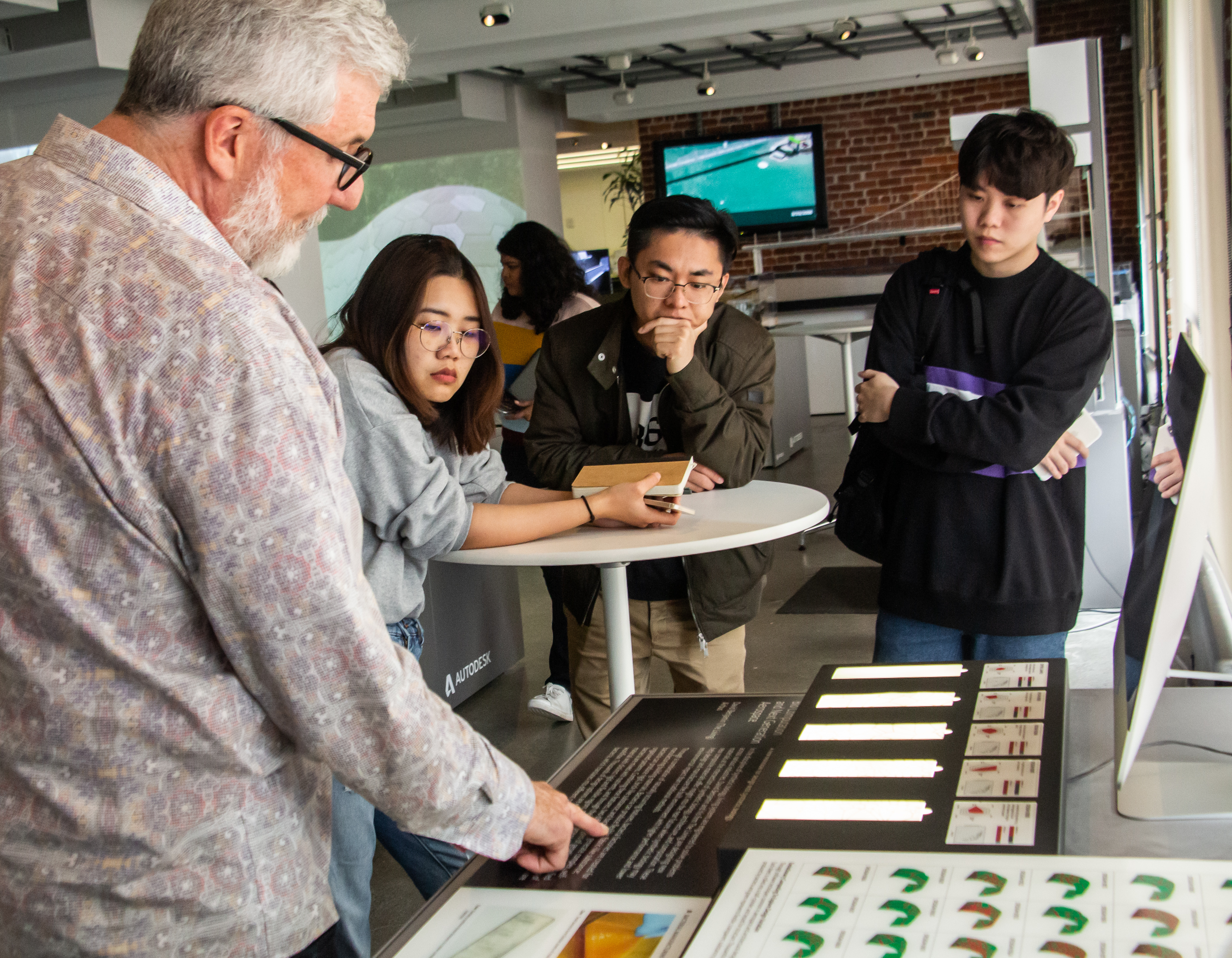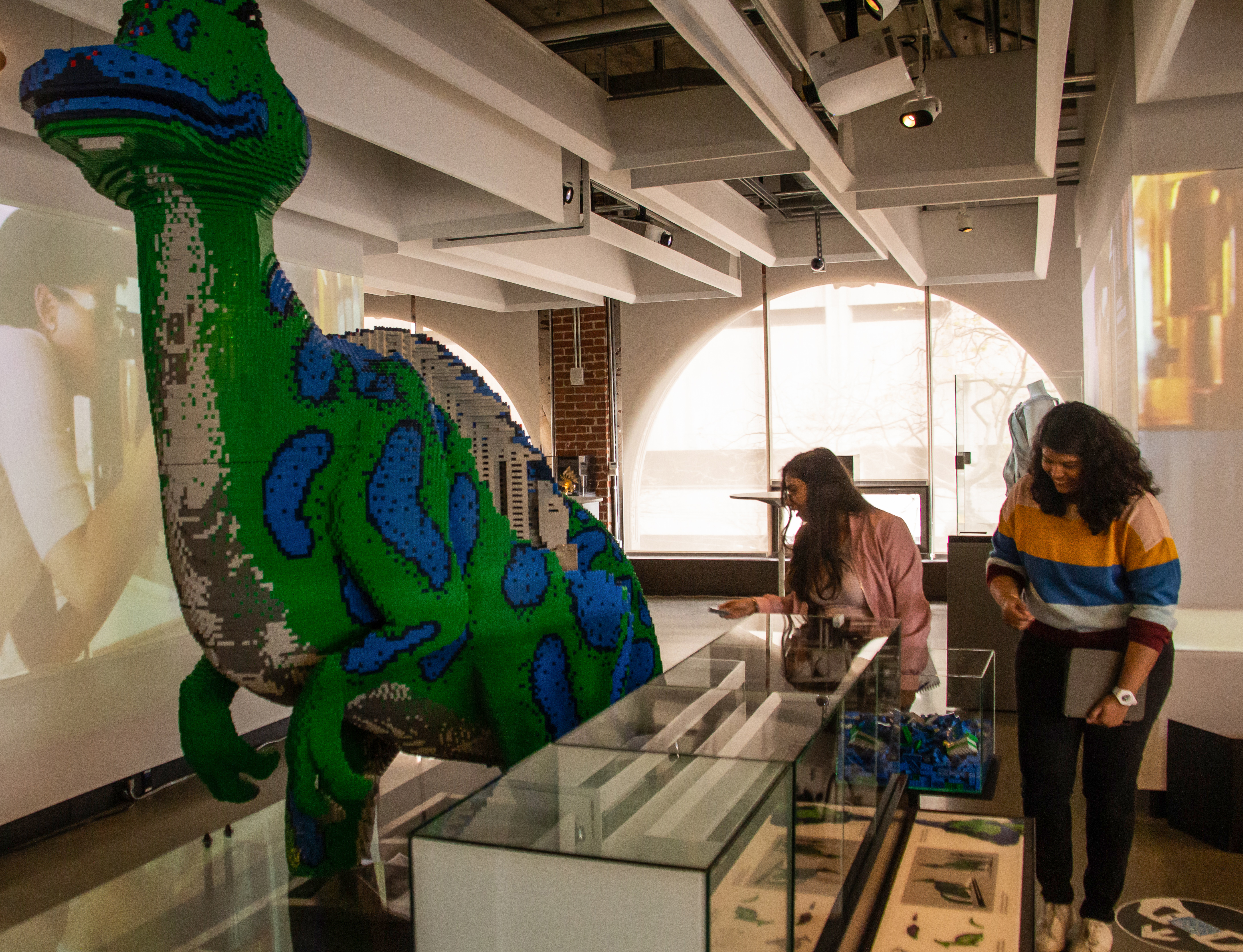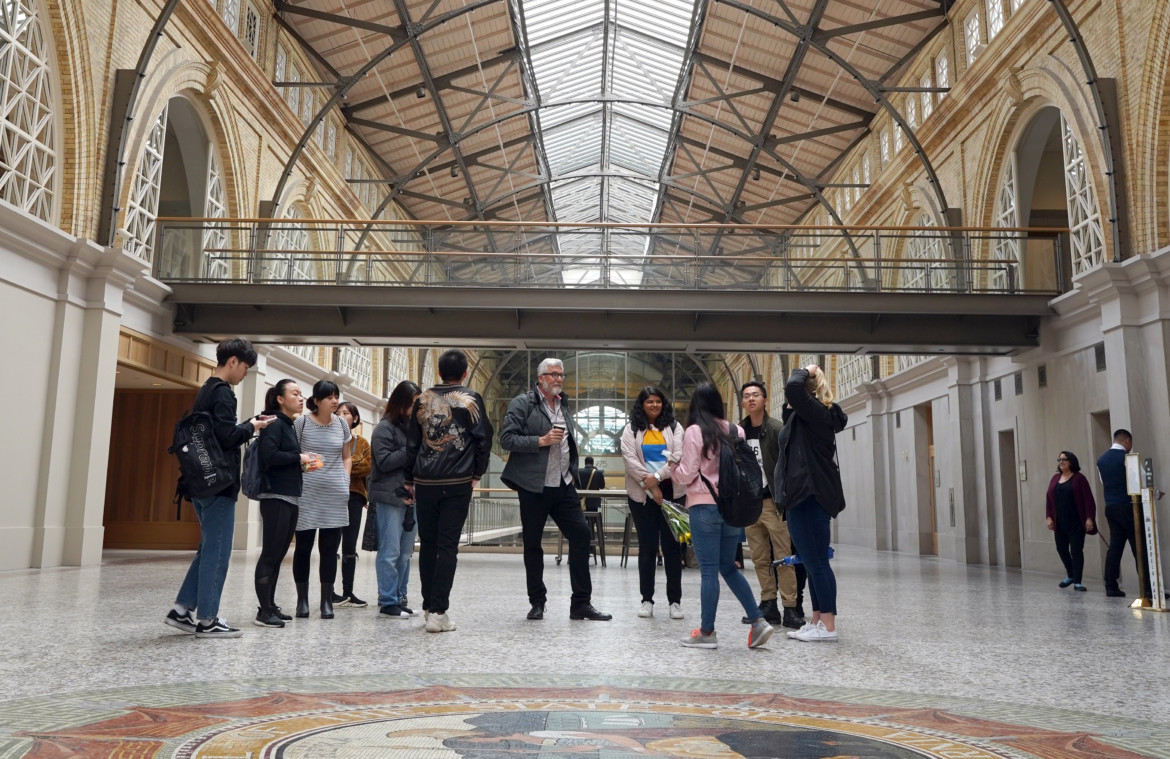From the Autodesk Gallery to the Exploratorium, IAD instructor Michael Sammet showed students specific design solutions in real-world settings
By Cristina Schreil
In the Autodesk Gallery at 1 Market Street on April 2, students observed a demolition robot, a phone-charging stove, a Mercedes-Benz made of material grown from a seed, and a 62,500-Lego-piece dinosaur. Academy of Art University School of Interior Architecture & Design (IAD) instructor Michael Sammet gestured toward a scale model of a peculiarly twisted skyscraper. It was Shanghai Tower, China’s tallest building. It was also, it turns out, a perfect way to showcase how the very software Sammet’s students use has led to real-world sustainable solutions.
“You’d have to put a lot of materials in this building to help it resist the wind. Or, you could do what?” Sammet asked students. The class pondered at the warped, futuristic shape. He then explained that the twisting design the software helped achieve reduced wind load, eliminating the need for extra materials to buttress the building. Sammet introduced other design projects throughout the gallery. “They’re showcasing what you can do with their software,” Sammet said. “One thing you can do, at least for us, is to design sustainably. That’s why we’re here.”

IAD instructor Michael Sammet, center, who teaches sustainable design, guides students around the Autodesk Gallery on Market Street on a special field trip. Photo by Bob Toy.
Sammet, who’s been teaching sustainable design at the Academy for nearly 10 years, has led this field trip many times. He says it’s a vital bridge between the classroom and everyday life as a sustainable designer. “They spend their days around this software anyway,” Sammet said of his students.
The field trip also included the Ferry Building, a few waterfront restaurants, and the Exploratorium. Along the way, Sammet spoke about specific sustainable design solutions, San Francisco history, and how his students can view their world through the eyes of a sustainable designer.
“It’s just beautiful. Humans create computers and computers help us out with many things,” Hao Yu, a first-year IAD M.A. student, said of the Autodesk Gallery. She added that sustainability is not only a trend but something her generation is encouraged to embrace. She’s passionate about it. “It’s how we can survive. It’s the future.”

Sammet shows students innovative designs, projects, and products at the Autodesk Gallery. Photo by Adrian Childress.
Sammet said such field trips connect students to the bigger design community and the future of sustainable design. At times, this included getting detailed. Before entering the Autodesk Gallery, he pointed to a list of ways the space achieved LEED Platinum Certification. He delved into each element, from water use reduction to recycled office furniture, emphasizing that these are aspects students should remember when designing.
In the Ferry Building, Sammet pored over several historical photographs. “The history of this building represents, for me anyway, the three periods of sustainable design in cities,” Sammet said. He zeroed in on the impact of the automobile. On the light and spacious second floor, he oriented students to a designer mindset: “What’s the first thing you notice, as a sustainable designer? There are no lights!”
On the walk to the Exploratorium, Sammet guided the class through a few restaurants, popping in to point out design features, including how architecture matches cuisine and creates ambiance. As students gazed up at the high ceilings and sleek design elements of La Mar, a Peruvian restaurant at Pier 1 ½, Sammet mentioned the space’s historic rehabilitation. “The most sustainable building is the one that never gets built,” he said.

IAD students explore the Autodesk Gallery beside an 8.5-foot, 62,500-LEGO-piece dinosaur. Photo by Adrian Childress.
For student Ayesha Mulani, who aspires to LEED accreditation, the field trip was an extension of her “practical” design education at the Academy. “It’s actually when you understand what you learned,” she said. “You gain knowledge by seeing how it works.”
Mulani was one of several students who added to the conversation at the Exploratorium. Standing in the lobby, Sammet asked students how they would reduce energy. “You’re the designer,” he prompted. “What would you do? Well, what’s the biggest use of energy in the building?”
“Heating and cooling,” Mulani said. She added that natural ventilation could achieve this.
Sammet also noted how the building has lots of natural light and solar panels blanketing the roof. He also detailed the energy-saving heating and cooling system that uses bay water and a network of pipes. As a result, the Exploratorium is the largest net zero museum in the world. It was a fitting cap for a field trip looking to the future.
“Hopefully, in 10 years, everything will be net zero,” Sammet said to students. “And you’re going to be leading the charge.”
